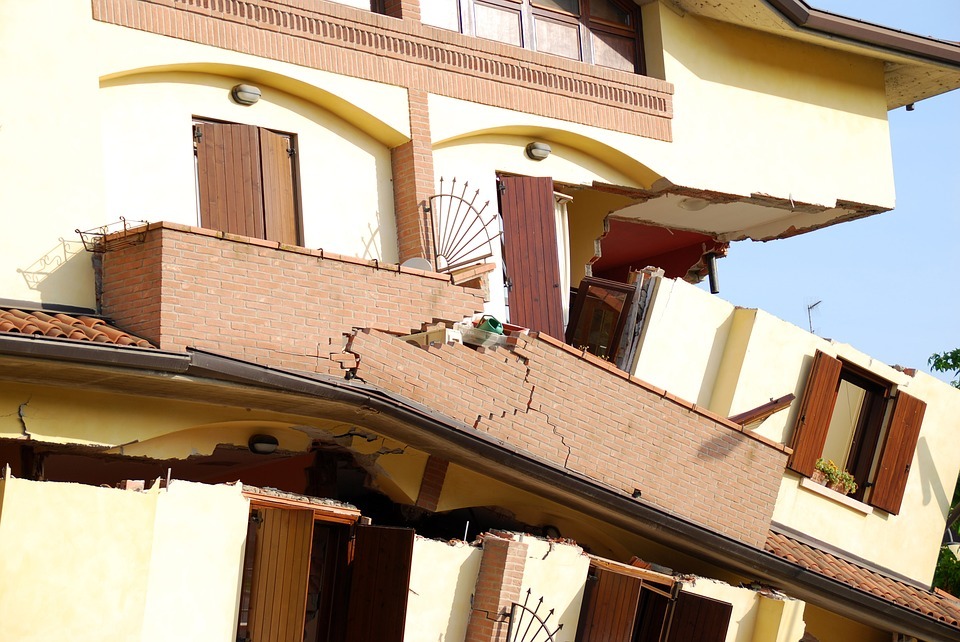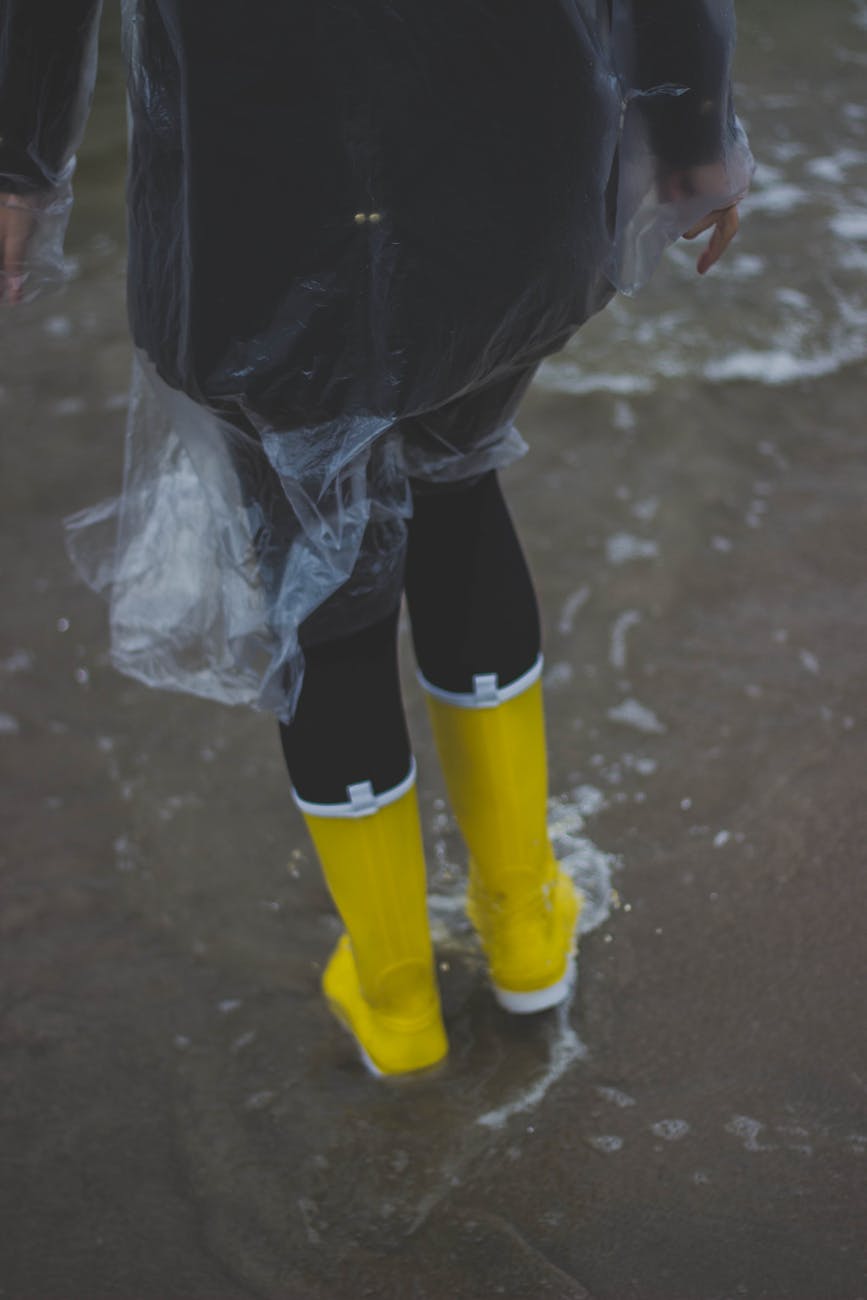Tips for Building a Checklist of Essential SHFT Gear: Must-Have Items for Preparedness
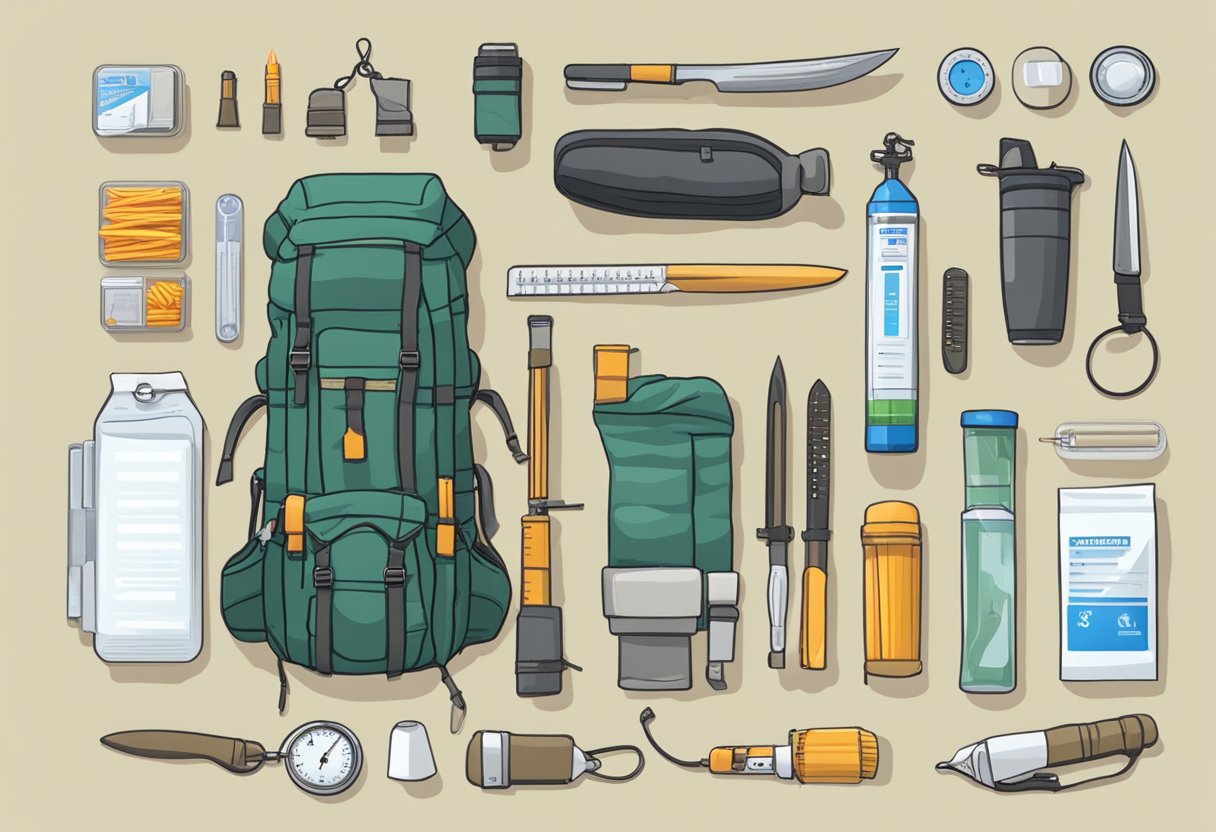
Preparing for an emergency requires careful planning and a well-thought-out checklist. When building an SHTF (Shit Hits The Fan) gear list, it's crucial to focus on the essentials that will ensure your survival and comfort. Essential items include food supplies, drinking water, medicines, sleeping equipment, and power backup options. These basics can make a significant difference in difficult situations.
A practical SHTF gear list will not only prepare you for scenarios like natural disasters or power outages but will also give you peace of mind knowing you're ready for the unexpected. Tools like a solar generator, emergency blankets, and a good supply of extra clothing can be invaluable. Remember, setting aside some ammunition and other survival tools can help you stay safe and secure.
In addition to the basics, it's wise to consider more specialized items. A good SHTF list often includes weapons for self-defense, portable shelters like tents or bivvy bags, and various hand and body warmers. Thoughtful preparation with the right gear can make all the difference when it matters most.
Understanding SHFT Preparedness
Building a proper SHFT (Stuff Hits The Fan) gear checklist is crucial for ensuring survival during emergencies. Knowing what to pack, evaluating the required levels of gear, and balancing efficiency with weight can make all the difference.
Concept of SHFT
SHFT refers to scenarios where normal life is disrupted significantly, requiring individuals to rely on their emergency preparations. These situations include natural disasters, economic collapse, or even widespread social unrest. In these moments, having a well-thought-out plan and the right gear is essential for maintaining safety and securing basic needs.
Evaluating Needed SHFT Gear Levels
Assessing the required gear involves understanding the specific risks and durations for which one needs to prepare. Basic necessities include:
- Water: Purification tablets or filters
- Food: Non-perishable items
- Shelter: Tents or tarps
For more extended situations, consider items like medical supplies, communication tools, and even weapons for protection. Balancing these needs ensures preparedness without overpacking.
Efficiency vs. Weight in SHFT Planning
When assembling SHFT gear, efficiency and weight are critical considerations. Gear should be lightweight yet durable to ensure it doesn't become a burden. For instance, tools that serve multiple purposes, such as a paracord bracelet that can be used for various tasks, can be invaluable. Packing only essential items keeps the bag manageable, aiding in mobility and quick response.
Below is a simple table highlighting key gear considerations:
| Item Category | Must-Have Items | Lightweight Alternatives |
|---|---|---|
| Water | Filters, Purification Tabs | Lightweight bottles |
| Food | Canned goods, MREs | Dehydrated meals |
| Shelter | Tent, Bivy bag | Compact tarp, Emergency bivy |
| Medical | First aid kit | Multi-tool bandage scissors |
Each category helps balance the important aspects of efficiency and weight, essential for effective SHFT preparation.
Essential SHFT Survival Gear
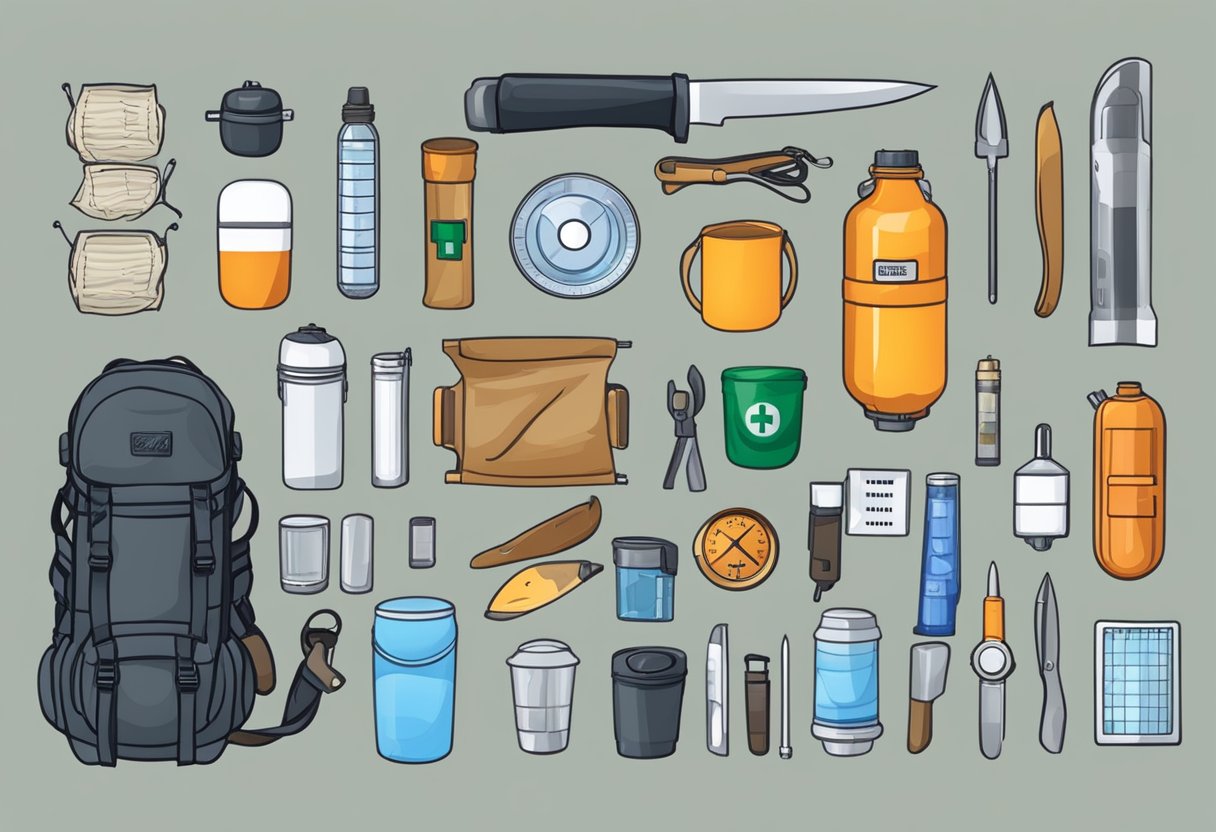
Building a checklist for SHTF situations includes selecting the right backpack, ensuring reliable shelter and sleep systems, securing water purification tools, understanding food and nutrition needs, assembling a first aid kit with essential medications, and choosing appropriate clothing for protection.
Choosing the Right Backpack
Selecting a quality backpack is crucial. It should be durable, waterproof, and large enough to hold all essential gear. A backpack with multiple compartments helps in organizing items efficiently. Adjustable straps are important for comfort during long wear. Consider a tactical backpack for added durability and functionality. Padded straps and back support will reduce fatigue.
Reliable Shelter and Sleep Systems
Shelter and sleep systems are fundamental for survival. A good tent or bivy bag provides protection from the elements. Emergency blankets and sleeping bags offer warmth during cold nights. Tarps can be used to create a quick shelter or to cover items. Hand and body warmers are useful in freezing conditions. Always have a plan for sheltering in different environments.
Water Purification Essentials
Access to clean water is vital. Water purification tablets, portable water filters, and UV light purifiers should be in your kit. These tools remove contaminants and make water safe to drink. Carry a few collapsible water containers to store purified water. In emergencies, boiling water can also kill pathogens, so a portable stove or fire-starting kit can be very useful.
Food and Nutrition Requirements
Stock non-perishable food items that are high in calories and nutrients. Canned goods, dried fruits, nuts, and energy bars are good options. Freeze-dried meals are lightweight and easy to prepare. A reliable manual can opener is necessary. Consider the shelf life of the food and rotate stocks regularly to ensure freshness. A small camping stove or portable cooker will help in preparing hot meals.
Importance of First Aid and Medications
A comprehensive first aid kit is a must. It should include bandages, antiseptics, tweezers, scissors, and gloves. Personal medications, such as prescription drugs, must be kept in supply. Over-the-counter pain relievers, antihistamines, and anti-diarrheal medications are also important. Knowing how to use the items in the first aid kit can make a difference in emergencies.
Clothing and Insulation for Protection
Clothing should be versatile and suitable for different weather conditions. Layers are key; consider thermal underwear, insulated jackets, waterproof and windproof outer layers. Extra sets of socks, underwear, and gloves are essential. Hats and bandanas provide additional protection against sun and cold. Choose materials that dry quickly and retain warmth even when wet, like wool and synthetic blends.
Tools and Equipment

Having the right tools and equipment is crucial for any SHTF scenario. Essential items include hand tools, navigation aids, fire-starting kits, and power tools. Each item serves a specific purpose and can make a big difference in an emergency.
Core Hand Tools and Multitools
Hand tools are the backbone of any emergency kit. A good set should include a hammer, screwdrivers (flat and Phillips), and pliers. These tools are versatile and can help with building, repairing, and maintaining shelter.
Multitools are particularly useful. They typically include multiple functions such as scissors, knife blades, can openers, and more. The compact design makes them easy to carry and invaluable during an emergency.
Navigation and Communication
Staying oriented and communicating is vital. A reliable compass and GPS device are essential for navigation. They help you find your way when roads and landmarks are unfamiliar.
For communication, a two-way radio or a satellite phone can be lifesavers. These devices ensure you can contact rescue services or coordinate with your group.
Fire Starting and Illumination Tools
Being able to start a fire is critical for warmth and cooking. Essential fire-starting tools include lighters, waterproof matches, and various types of fire starters. Keeping these items in waterproof containers ensures they will work when needed.
Flashlights and lanterns are important for illumination. LED flashlights are recommended for their brightness and efficiency. Extra batteries should always be part of your kit.
Power Tools and Construction Supplies
Power tools like drills, saws, and grinders can be extremely useful for larger construction tasks. They aid in building shelters, making repairs, and even crafting additional tools or defenses.
Construction supplies such as nails, screws, rope, and tape measures are also crucial. These items can help secure structures and create makeshift solutions when needed.
Personal Items and Miscellaneous Gear
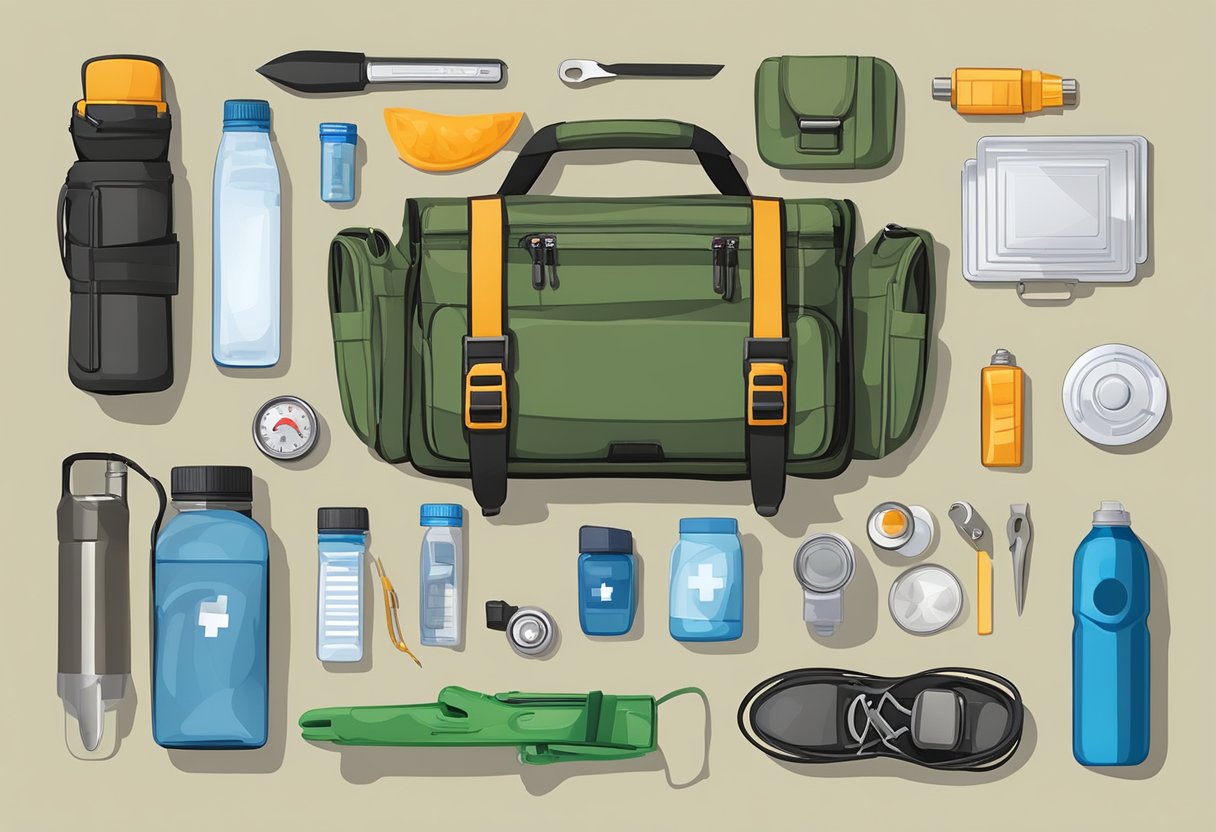
When preparing a SHFT gear checklist, it's important to consider personal items and miscellaneous gear. These essentials cover hygiene, technical gadgets, safety gear, and comfort items that are crucial for survival and well-being.
Hygiene and Personal Care
Maintain hygiene with a toothbrush, hand sanitizer, and comb. Pack a travel-sized soap and toothpaste, or dry shampoo if water is scarce. Earplugs can help block out noise and ensure rest, while glasses or contact lenses are vital if you rely on them for vision. Basic toiletries like tissue paper and feminine hygiene products should not be forgotten.
Technical Gadgets and Accessories
A phone with a reliable power source, such as a solar charger, is essential for communication. Include a camera to document events and a pen and notebook for recording important information. Backup batteries or a power bank ensure these devices stay charged. An ID and some cash should always be on hand for identification and transactions.
Safety and Protection Gear
Protective clothing and safety gear like gloves, goggles, and a face mask are key. Include items like a first aid kit and a whistle for signaling. Duct tape can be useful for repairs and securing items. Having sturdy shoes and a multi-purpose tool can help in challenging environments.
Additional Supplies and Comfort Items
Comfort items, though often overlooked, can boost morale. A small pillow and a blanket can improve sleep quality. Pack a book for mental stimulation. Small luxury items, like instant coffee packets or a deck of cards, can provide relaxation and normalcy. Always ensure that your supplies are compact and easy to carry.
Specialty Gear for SHTF Scenarios
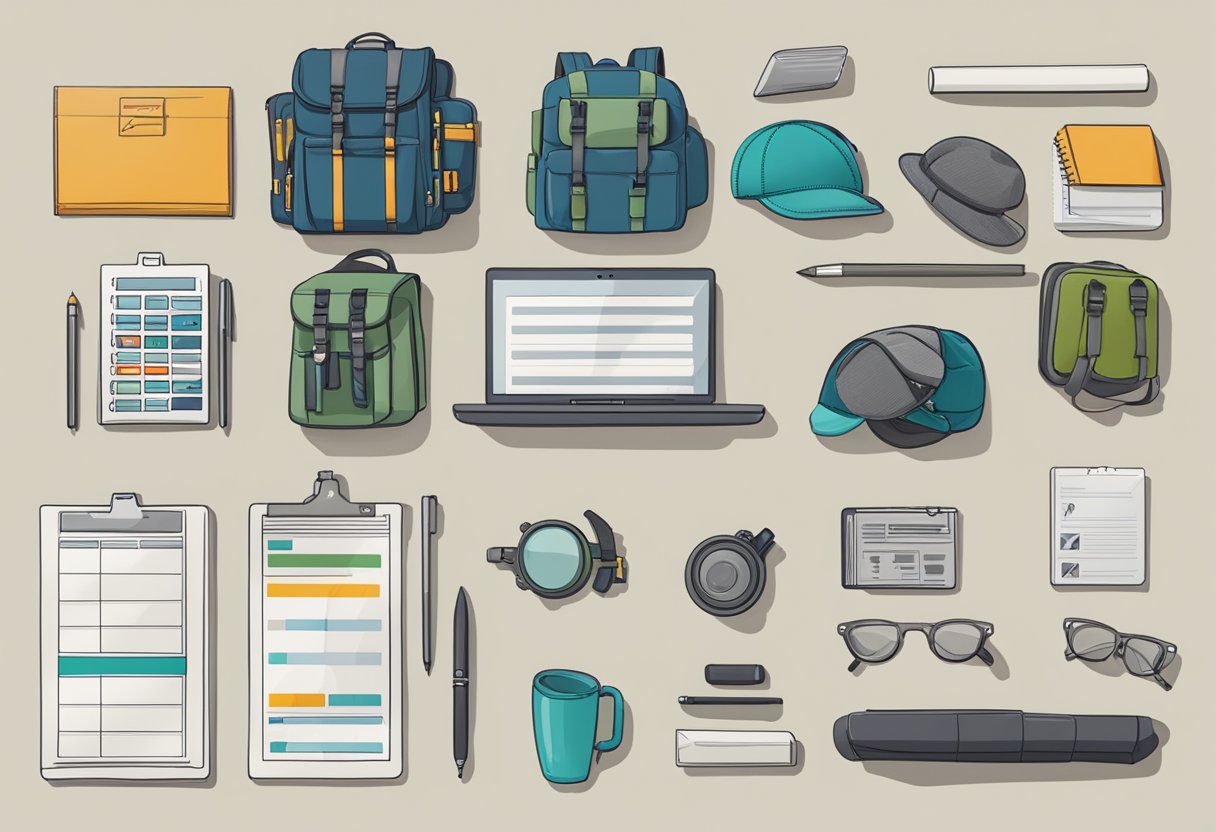
Selecting gear for SHTF scenarios means accounting for different weather conditions, disaster types, and the need for portability. Specialty gear can make a big difference when facing unforeseen circumstances.
Selecting Weather-Appropriate Gear
Weather conditions can vary greatly, so it's crucial to have gear that can handle extreme temperatures and weather events. Cold-weather gear should include insulated clothing, waterproof jackets, and thermal socks to prevent hypothermia. In hot weather, lightweight, breathable clothing and wide-brimmed hats are essential.
Footwear is also important. Sturdy, waterproof boots are needed for wet or snowy conditions, while breathable hiking shoes work better in hot climates. Don't forget about gloves—insulated for cold and tactical or work gloves for protection in various tasks.
Tailoring Gear for Different Disasters
Different disasters require specialized gear. In case of floods, waterproof bags for your essentials are crucial. For earthquakes, tools like crowbars and sturdy shoes are important for navigating debris. Tornadoes might demand a set of protective headgear and heavy-duty gloves.
Stockpiling ammo is necessary for defense purposes, especially in areas prone to civil unrest. For wildfires, respiratory masks and fire-resistant clothing can protect against smoke and flames. Think about the specific risks of your area and tailor your gear accordingly.
Portable and Lightweight Options
When mobility is key, focus on portable and lightweight gear. Backpacking gear that folds or collapses, like compact tents and folding trekking poles, keeps your load manageable. Multi-use items are beneficial, such as a tool that serves as a knife, saw, and screwdriver.
Choose a lightweight but durable backpack with plenty of compartments for easy access to your items. Items like portable water filters, compact first aid kits, and lightweight food rations are essential. Additionally, solar-powered devices can replace heavier battery-operated ones, making your gear more efficient and lightening your load.
Optimizing SHTF Gear Organization
A well-organized SHTF gear setup is crucial for efficient use, easy access, and effective maintenance. Proper packing strategies, regular upkeep of gear, and making cost-effective investments are key components.
Effective Packing Strategies
Effective packing strategies enhance the ease of access and mobility during emergencies. It's important to group similar items together and label each container. Use waterproof bags for items that must remain dry, like clothing and food supplies.
Lists are useful. A detailed camping checklist, such as one for a camping trip, can ensure all essential items are included. Modular packing can also help. This way, smaller packs are easier to handle, and specific gear can be accessed without unpacking everything.
Maintenance and Gear Upkeep
Regular maintenance extends the lifespan of SHTF gear. Inspect items routinely for signs of wear and damage. Clean tents, tarps, and clothing after every use to prevent mildew and rot. Recharge or replace the batteries in devices like flashlights and radios frequently.
Check expiration dates on food supplies and medications, rotating stock as needed. Store gear in a dry place to avoid moisture-related damage. Maintenance guides can offer additional information tailored to specific equipment.
Cost-Effectiveness and Investment
Investing in quality gear pays off over time. Choosing durable items reduces the need for frequent replacements. Second-hand stores and online marketplaces can be good sources for cost-effective equipment. It's wise to compare prices and read reviews to ensure reliability.
Prioritize multi-purpose tools to maximize utility while minimizing costs. Buy in bulk where practical, sharing resources with friends or community groups can help save. Seek out discounts or sales, especially when buying seasonally.
Practical Skills and Knowledge
Understanding practical skills is vital for survival during unexpected situations. Knowing how to navigate, provide first aid, and use survival techniques increases your chances of staying safe and helping others.
Navigation Skill and Map Reading
Navigation skills help you find your way when GPS devices fail. Being proficient with a map and compass is essential. Maps give you a clear view of the area, and compasses show direction.
Using landmarks like rivers or mountains and navigating by the stars can also be invaluable. Training with navigation tools can prevent getting lost and lead you to safety.
First Aid and Emergency Response
First aid is critical for treating injuries before professional help arrives. Knowing how to use a first aid kit ensures you can handle cuts, burns, and fractures. Essential items include bandages, antiseptic wipes, and tourniquets.
Training in CPR and the Heimlich maneuver can save lives in emergencies. Recognizing symptoms of severe conditions, such as shock or allergic reactions, helps manage situations better.
Survival Techniques and Practical Training
Survival techniques cover a broad range of skills. Building shelters, starting a fire, and finding water are key components. Learning to use survival gear, like multi-tools and fire starters, enhances preparedness.
Practical training, like hunting or fishing, adds valuable experience. Staying calm and focused during an emergency can be the difference between life and death. Practicing these skills regularly ensures readiness when it matters most.



